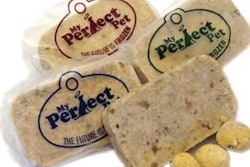Heading toward the end of the year, the economic news could not get much bleaker. Some pet industry professionals, such as the editors of Pet Business magazine, are predicting this will negatively impact holiday sales for US pet retailers.
If that’s the case, you never would have seen it coming during SuperZoo in September in Las Vegas, Nevada, USA. There was a palpable buzz on the trade show floor and even a fair amount of traffic on the last afternoon. According to the host, the World Pet Association, the show drew a record number of exhibitors—795, a 15% increase over the 2010 show—and attendees (mostly pet retailers)—12,197, a 19% jump from last year. Overall, there were 4,716 companies represented, a full 26% jump from 2010.
Similarly, as this issue goes to press, H.H. Backer’s 45th Annual Pet Industry Christmas Trade Show in the Chicago area is about to kick off with more than 750 exhibitors in over 1,250 booths. Both represent increases over last year’s numbers of 733 and 1,216, respectively, according to show organizers. The 2010 show drew nearly 8,800 retail buyers.
As I observed the continual activity at SuperZoo, I kept thinking, “Thank goodness for pet humanization.” This engine that has been driving the continued growth of our industry seems to still be humming along. Economic worries aside, new surveys and reports indicate it will continue to keep our industry on an upward curve.
One survey comes from what seems an unlikely source—CouponCabin.com, an online portal for all sorts of coupons, not just pet food products—yet offers welcome news: 68% of US dog owners surveyed said economic challenges are not affecting their dog care spending. Further, 21% of respondents spend an average of US$100 or more per month on their dogs.
The survey was conducted online by Harris Interactive in August—certainly not a bellweather month for the US economy—among 2,212 US dog owners. It found that they consider veterinary visits their highest dog-related expense, with 57% of respondents citing it, followed by dog food at 16%, medications at 15% and boarding at 6%. That food came in a distant second (and barely ahead of other health-related expenses) is a good sign for our industry.
US pet owners are not the only ones who treat their pets like full-fledged family members. Recently Karen Pickwick, editor of Pet Business World, a UK publication, quoted some interesting statistics:
- 9% of the UK’s 29 million Facebook users create pages specifically for their pets, according to the UK’s largest pet insurer, and one in 10 UK pets has its own Facebook, Twitter or YouTube page; and
- Research by Mars Petcare UK shows a third of pet owners would sell a valuable possession to pay a veterinary bill, with 11% saying they would mortgage their house!
The fact that pet owners in Europe—70 million households in all—humanize their pets pays dividends for the economy and society, according to the European Pet Food Industry Federation (FEDIAF). Its new report (www.fediaf.org/facts-figures) shows pet ownership accounts for about 550,000 direct or indirect jobs throughout Europe, with 50,000 directly attributable to petfood.
Overall, pet food in Europe is produced at 650 plants, has an annual turnover of 13.5 billion Euros (US$18.3 billion) and volume sales of 8.3 million tons and is growing at an average annual rate of 2%, FEDIAF says. While 2% is not robust, any growth at all means pet parents are continuing to care for their pets like human family members, despite the economy.

















